World of Warships: New U.S. Battleships sighted on the horizon!
11 min readYesterday, after a lot of speculation regarding the next line that would appear after the German Aircraft Carriers, the North American team of Wargaming finally revealed what it was going to be.
While, after all the teasing, we had a fairly good idea of what to expect… the actual result is flabbergasting (I always wanted to use that word), to say the least.
The next line that will join the game is actually a sub-branch of the U.S. battleships line that will start at tier VIII. This split is awkward, to say the least. Instead of using preliminary designs for the Iowa and Montana for the high tier ships and existing classes on low tier, we only got paper ships including a modified TILLMAN BATTLESHIP! I will not lie, I needed a serious reality check to make sure that I wasn’t dreaming when I saw that.

Anyway… these new 3 tech tree battleships will follow designs from the late 1910s to early 1920s which explains their outdated appearance as well as their terribly low speed. They are also characterized by a much heavier main battery than any battleship of the same tier with a slower reload as well as relatively light armor.
Low speed and light armor, it’s the best possible combination, right?
The ships also use the same dispersion formula as the other U.S. tech tree battleships and also have their improved Repair Party.
There is also a tier VII Premium battleship, the Florida, that presents a similar design to the Champagne and Slava with lighter armor compared to other battleships but improved dispersion.
For the classic reminder, everything that you will read here is a work in progress, things are bound to change:
![]()
Tier VIII U.S. Battleship Kansas
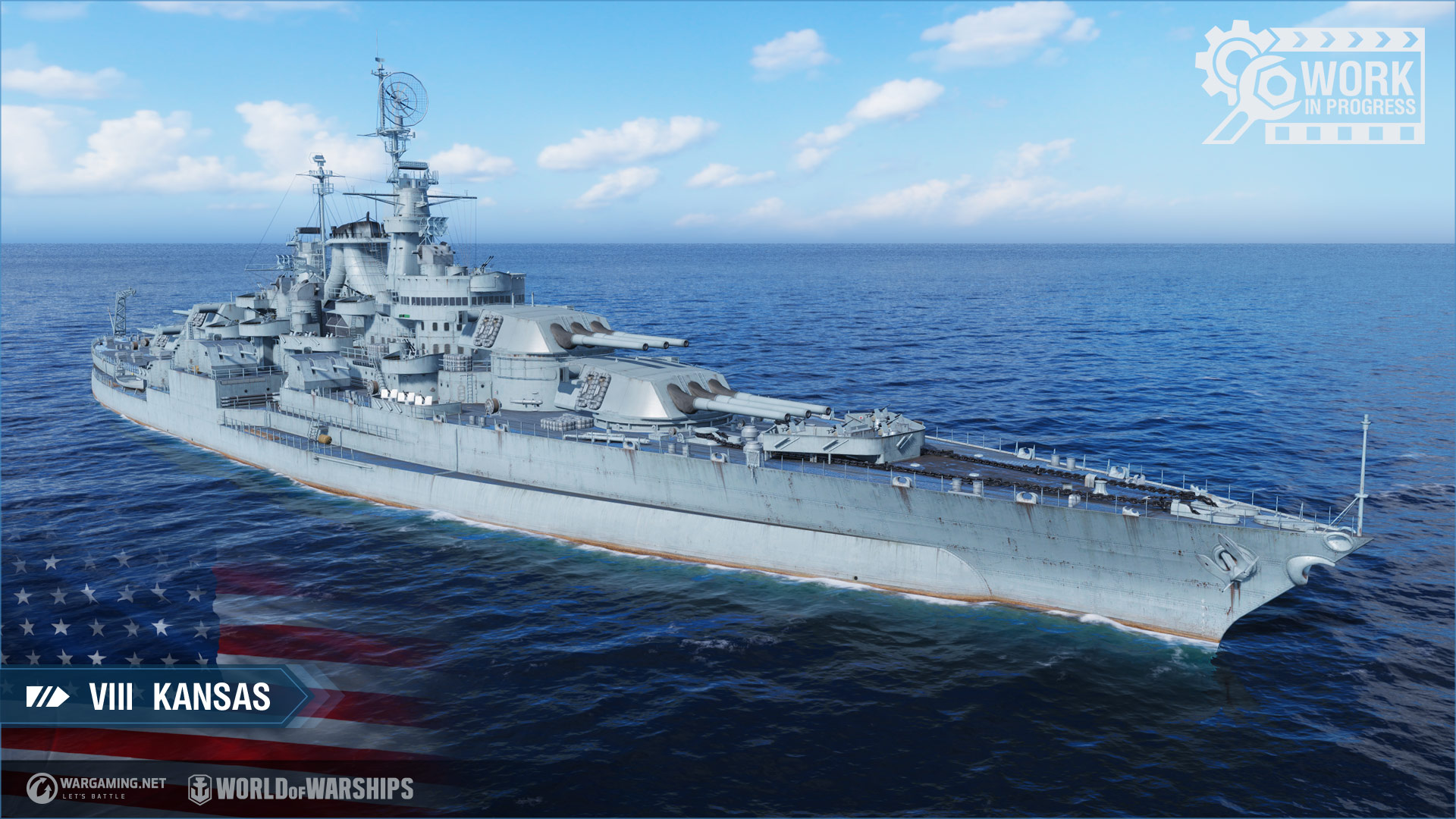
The Kansas, starting the sub-branch of U.S. battleships is based on the planned South-Dakota-class from 1920.
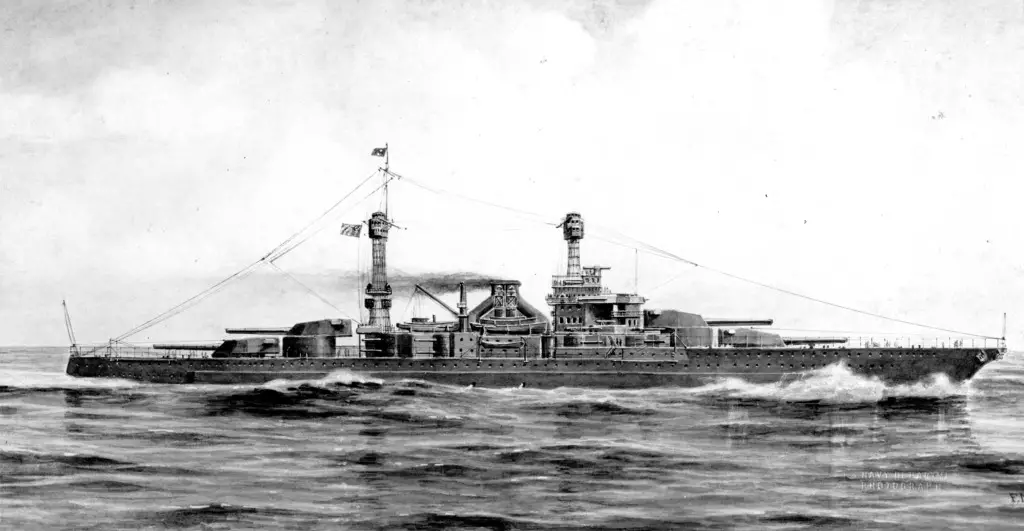
The South Dakota-class was the first class of battleships built under the Naval Act of 1916. With this new law, the Navy was finally receiving proper funding from the Congress, allowing them to up their game compared to the previous classes of standard battleships. The previous classes of 2 to 3 units all had fairly similar characteristics to allow them to operate as a fleet. These limitations were putting the U.S. Navy at risk to be left behind in the global arms race as the potential enemies all had faster battleships, giving them the advantage of being able to withdraw when needed or alternatively, to block the U.S. battleship from retreating.
With the South Dakota, since they finally had the funds for it, the design was more than 10 000 tons heavier than the previous Colorado-class. This allowed for bigger engines that would push the speed to 23 knots as well as better protection and a main battery that would consist of no less than 12 406 mm guns in 4 triple turrets. The guns were also meant to be 50 caliber instead of Colorado’s 45 caliber which would give them a longer range and better punching power. This firepower was well above what any other nation could present at the time.
Sadly, with the arrival of the Washington Naval Treaty, limiting the displacement of battleships to 35 000 tons, all 6 ships had to be scrapped.
In World of Warships, we are getting a weird World War 2 modernized version of the South Dakota. Unlike the next ship, it doesn’t seem to be a full rebuild like, for example, on the California as the superstructure still presents old elements of the initial design like the funnels. I just wonder if the stock hull will look more like the South Dakota-class as designed.
Health Pool and Armor
- Hit points – 67,000.
- Plating – 32 mm.
Main Armament
- Main battery – 4×3 406 mm.
- Firing range – 22.7 km.
- Maximum HE shell damage – 5,700.
- Chance to cause fire – 36%.
- HE initial velocity – 803 m/s.
- Maximum AP shell damage – 12,400.
- AP initial velocity – 768 m/s.
- Reload time – 40.0 s.
- 180 degree turn time – 45.0 s.
- Maximum dispersion – 287 m.
- Sigma – 1.70.
Secondary Armament
- 8×2 127.0 mm
- range – 5.0 km.
- Maximum HE shell damage – 1,800.
- Chance to cause fire – 5%.
- HE initial velocity – 792 m/s
Anti-air Armament
- AA defense: 23×2 20.0 mm, 8×2 127.0 mm, 12×4 40.0 mm.
- AA defense short-range: continuous damage per second – 280, hit probability – 70 %, action zone 0.1-2.0 km;
- AA defense mid-range: continuous damage per second – 319, hit probability – 75 %, action zone 0.1-3.5 km;
- AA defense long-range: continuous damage per second – 147, hit probability – 75 %, action zone 0.1-5.8 km;
- Number of explosions in a salvo – 6, damage within an explosion – 1,540; action zone 3.5-5.8 km.
Maneuverability and Concealment
- Maximum speed – 23.0 kt.
- Turning circle radius – 700 m.
- Rudder shift time – 15.7 s.
- Surface detectability – 16.6 km.
- Air detectability – 13.5 km.
- Detectability after firing main guns in smoke – 16.0 km.
Available consumables
- Slot 1 – Damage Control Party
- Slot 2 – Repair Party (Duration time 28 s; HP per second 442.2; Reload time 80 s; Charges 4)
- Slot 3 – Fighter/Spotting Aircraft
Tier IX U.S. Battleship Minnesota
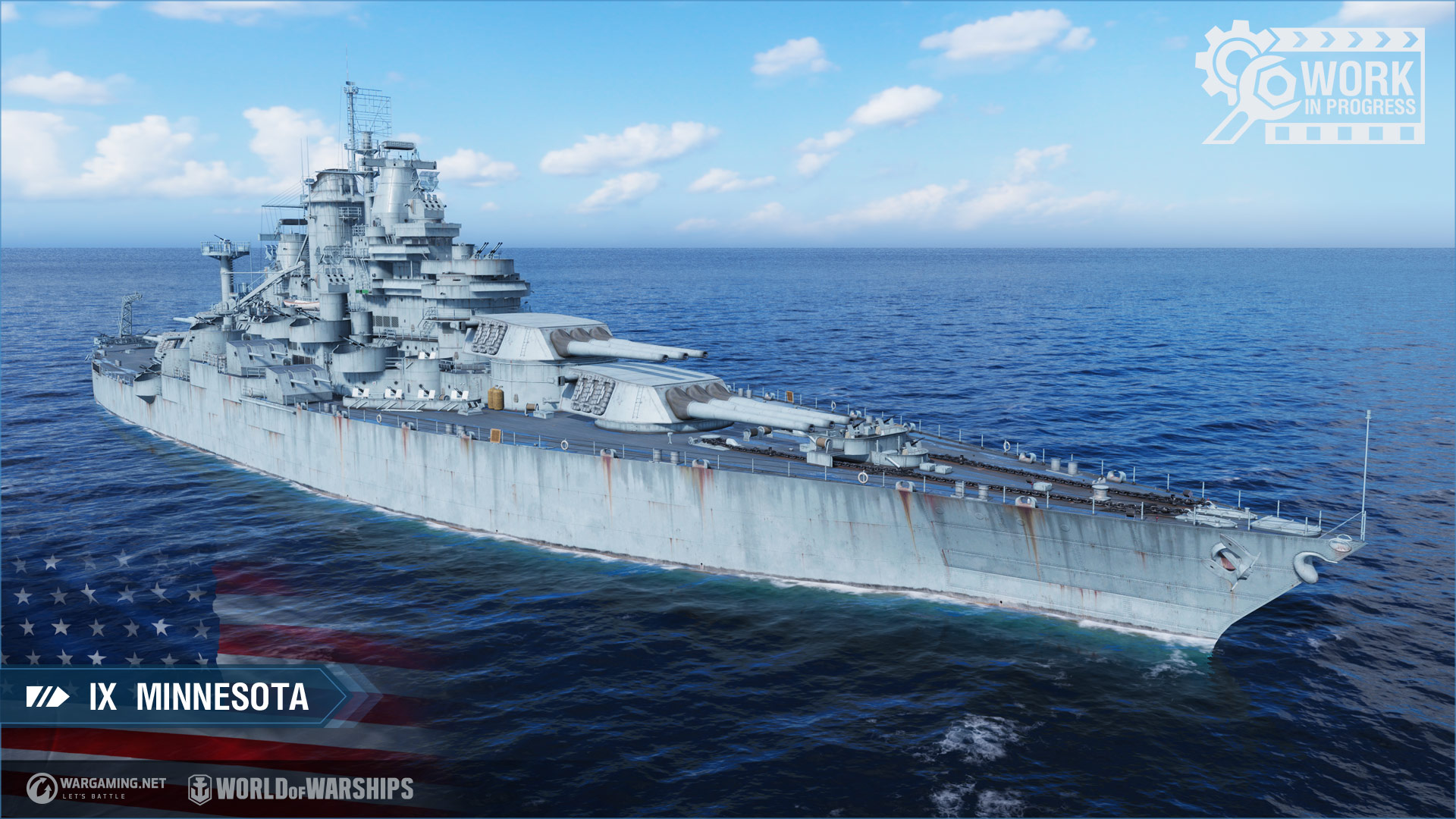
The Minnesota is where things start to be awkward. Overall, the ship could potentially be also based on the South Dakota but with a fully rebuild superstructure, potentially the same 406 mm/50 Mk 7 guns as on the Iowa-class battleships, a more modern secondary battery and a proper American AA armament from World War 2. All of these combined could explain the increased tonnage.
Health Pool and Armor
- Hit points – 76,300.
- Plating – 32 mm.
Main Armament
- Main battery – 4×3 406 mm.
- Firing range – 23.3 km.
- Maximum HE shell damage – 5,700.
- Chance to cause fire – 36%.
- HE initial velocity – 820 m/s.
- Maximum AP shell damage – 13,500. AP
- initial velocity – 762 m/s.
- Reload time – 40.0 s.
- 180 degree turn time – 45.0 s.
- Maximum dispersion – 293 m.
- Sigma – 1.70.
Secondary Armament
- 8×2 127.0 mm, range – 6.0 km.
- Maximum HE shell damage – 1,800.
- Chance to cause fire – 5%.
- HE initial velocity – 792 m/s
Anti-air Armament
- AA defense: 37×2 20.0 mm, 8×2 127.0 mm, 16×4 40.0 mm.
- AA defense short-range: continuous damage per second – 441, hit probability – 70 %, action zone 0.1-2.0 km;
- AA defense mid-range: continuous damage per second – 413, hit probability – 75 %, action zone 0.1-3.5 km;
- AA defense long-range: continuous damage per second – 140, hit probability – 75 %, action zone 0.1-5.8 km;
- Number of explosions in a salvo – 6, damage within an explosion – 1,610; action zone 3.5-5.8 km.
Maneuverability and Concealment
- Maximum speed – 23.0 kt.
- Turning circle radius – 700 m.
- Rudder shift time – 16.7 s.
- Surface detectability – 17.5 km.
- Air detectability – 13.4 km.
- Detectability after firing main guns in smoke – 17.1 km.
Available consumables
- Slot 1 – Damage Control Party
- Slot 2 – Repair Party (Duration time 28 s; HP per second 504; Reload time 80 s; Charges 4)
- Slot 3 – Fighter/Spotting Aircraft
Tier X U.S. Battleship Vermont
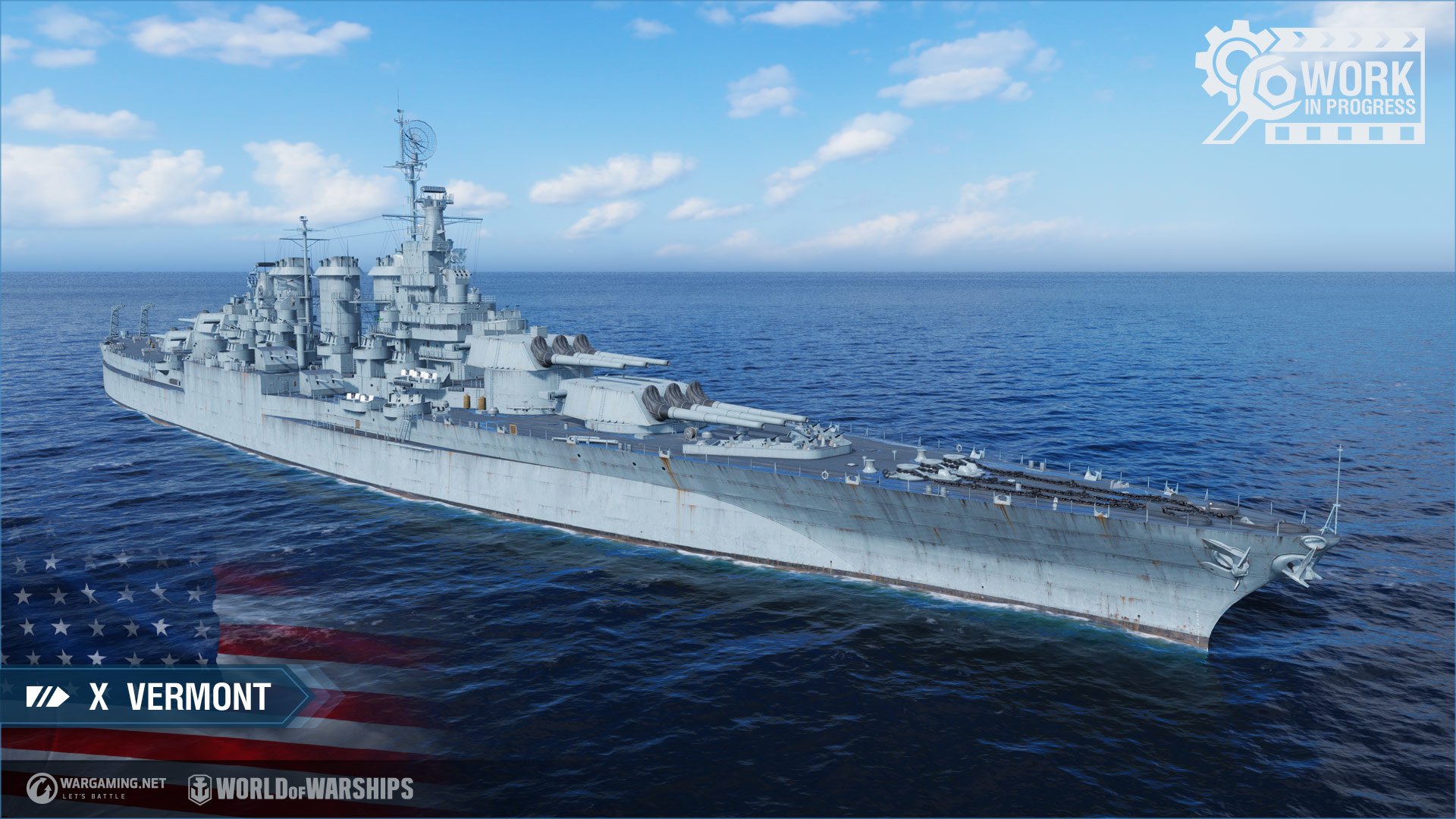
It’s a Tillman battleship…
Out of all the potential designs we could expect among the preliminary designs for the Montana-class, Wargaming decided instead to bring us nothing else than the Tillman I design.
For those who never heard about this… amazing story, let me tell you a bit about the Tillman battleships.
In 1912, senator Benjamin Tillman (a particularly unpleasant person), associated with the naval budget and naval designs at the time, wasn’t really a great fan of the U.S. Navy. He would basically do everything he could to cut their budget and also couldn’t understand why every new battleship class ordered was only slightly bigger and more expensive than the previous one. Pitchfork Ben also didn’t appreciate that the Navy had the habit to build bigger battleships than what the Congress asked for. To “take care of this issue”, he decided to ask the Bureau of constructions and repairs what would be the biggest battleship that they could potentially build. This first request didn’t go very far but it’s in 1916 that he would come back with his brilliant idea. There was a single limit to these Tillman battleships. They had to be able to pass through the Panama canal.
In total, 6 of these designs emerged (Tillman I, II, III, IV, IV-1 and IV-2) with, for the period, absolutely ridiculous characteristics. Their displacement would range from 63 500 tons for Tillman III to 80 000 tons for Tillman IV and its variations. When it comes to the armament, they would carry either 406 mm/50 guns or 457 mm/50 guns in a variety of configurations. For example, Tillman II and Tillman IV would carry 24 406 mm/50 guns in 4 SEXTUPLE turrets. I’m not even sure how a turret with 6 guns like that would work. The last Tillman, Tillman IV-2 was “only” designed with 15 457 mm/50 guns in 5 triple turrets.
The armor on these designs was, except on Tillman II and III, just as ridiculous back then with the main belt armor ranging from 406 mm to 483 mm. Tillman II and III only had 330 mm main belts because, for Tillman II, there were the sextuple turrets of the main battery and for Tillman III, the priority was on mobility with a maximum speed of 30 knots.
After there journey through the world of impracticality, the Navy decided to present the Tillman IV-2 to the Congress of 1917. They had, however, no plans to ever build such ship considering the cost and the fact that while they would build a single Tillman, other nations would build 3 smaller but more practical battleships. In 1918, senator Tillman died and this series of designs were “buried with him”. In the end, it wasn’t entirely a waste of time since they would affect later battleship designs such as the South Dakota-class from the 1920s.
When it comes to Vermont… In terms of estimated displacement, she reaches 77 855 tons (full-load) if she follows the formula used to determine the HP of battleships based on tonnage. This already eliminates all the Tillman IV variations. Tillman III also doesn’t fit considering her expected speed and her displacement of only 63 500 tons.
This only leaves Tillman I and II but considering the armament of Tillman II (24 406 mm/50 guns), Tillman I would be the best candidate. This means that Vermont is quite possibly a modernized and up-gunned version of the Tillman I, using the same guns as Georgia and Ohio.
Health Pool and Armor
- Hit points – 102,800.
- Plating – 32 mm.
Main Armament
- Main battery – 4×3 457 mm.
- Firing range – 24.5 km.
- Maximum HE shell damage – 6,450.
- Chance to cause fire – 43%.
- HE initial velocity – 800 m/s.
- Maximum AP shell damage – 15,750.
- AP initial velocity – 732 m/s.
- Reload time – 40.0 s.
- 180 degree turn time – 45.0 s.
- Maximum dispersion – 305 m.
- Sigma – 1.70.
Secondary Armament
- 8×2 127.0 mm,
- range – 6.0 km.
- Maximum HE shell damage – 1,800.
- Chance to cause fire – 5%.
- HE initial velocity – 792 m/s
Anti-air Armament
- AA defense: 36×2 20.0 mm, 8×2 127.0 mm, 21×4 40.0 mm.
- AA defense short-range: continuous damage per second – 424, hit probability – 70 %, action zone 0.1-2.0 km;
- AA defense mid-range: continuous damage per second – 536, hit probability – 75 %, action zone 0.1-3.5 km;
- AA defense long-range: continuous damage per second – 137, hit probability – 75 %, action zone 0.1-5.8 km;
- Number of explosions in a salvo – 6, damage within an explosion – 1,680; action zone 3.5-5.8 km.
Maneuverability and Concealment
- Maximum speed – 23.0 kt.
- Turning circle radius – 960 m.
- Rudder shift time – 19.1 s.
- Surface detectability – 18.0 km.
- Air detectability – 15.3 km.
- Detectability after firing main guns in smoke – 19.2 km.
Available consumables
- Slot 1 – Damage Control Party
- Slot 2 – Repair Party (Duration time 28 s; HP per second 678; Reload time 80 s; Charges 4)
- Slot 3 – Fighter/Spotting Aircraft
Tier VII Premium U.S. Battleship Florida
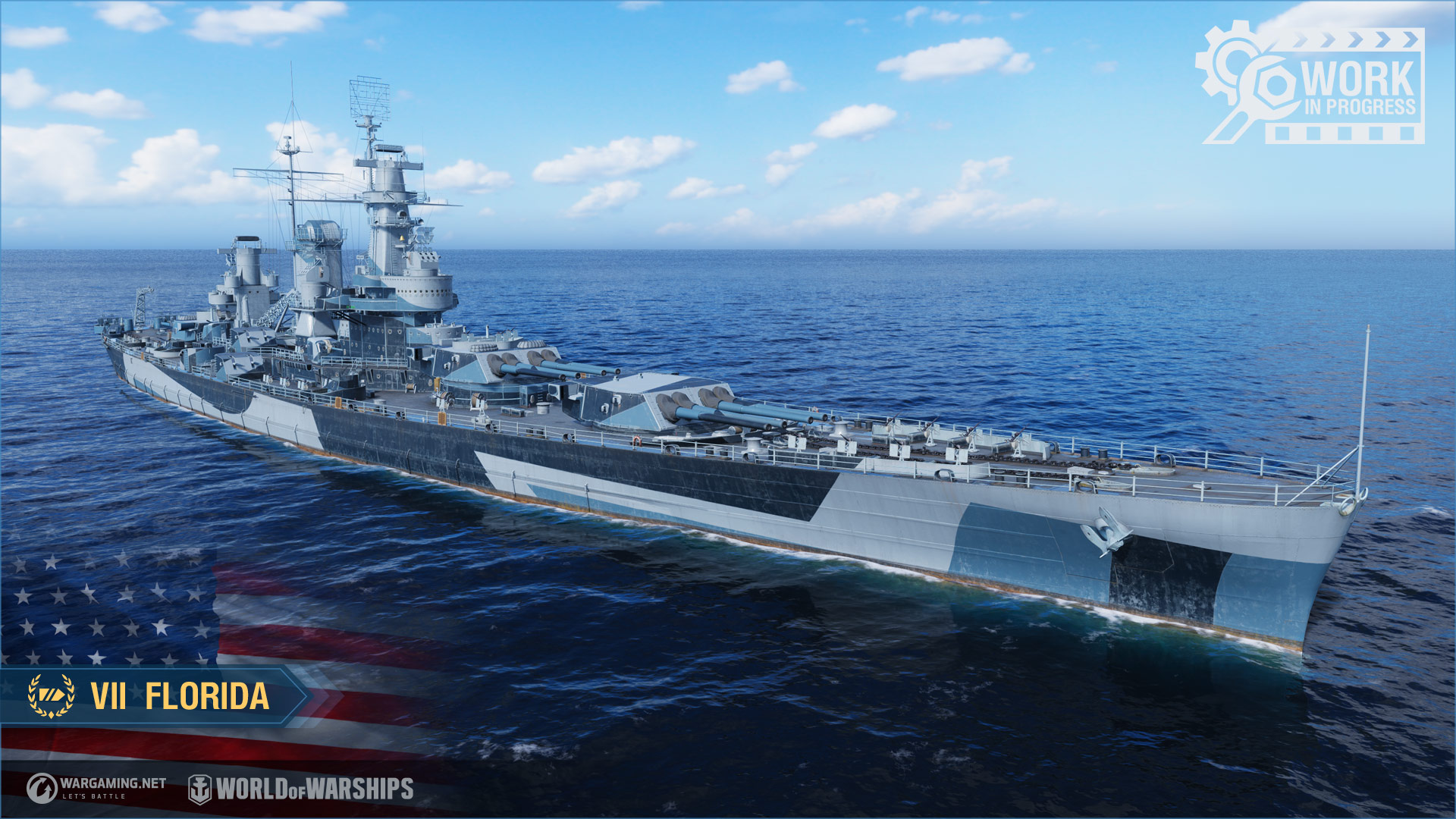
As a much more sensible design, we are getting the Florida at tier VII based on the North Carolina-class of battleships as it was initially designed.
After World War I, to stop the naval arms race that was raging between the different nations, multiple treaties were signed, including the Washington Naval Treaty of 1922 and the Second London Naval Treaty of 1936. All of these would limit the displacement of new battleships to 35 000 tons and their armament to 356 mm guns.
When the United-States Navy started works on a new class of battleships, 3 first designs were proposed, named A, B and C. Out of the 3, only the design A was under the 35 000 tons limit with a displacement of 32 500 tons, a speed of 30 knots and a main battery consisting of 3 triple turrets with 356 mm guns in a configuration similar to the Nelson. Several other designs were proposed with various configurations, including a hybrid between battleships and aircraft carriers (design F) with 2 quadruple turrets at the rear and a flight deck at the front.
In the end, the design that was picked for further development was the design K. 35 proposals were made with the design XVI-C being the selected one for construction with 3 quadruple turrets with 356 mm guns, a main belt of 260 mm and a speed of 27 knots.
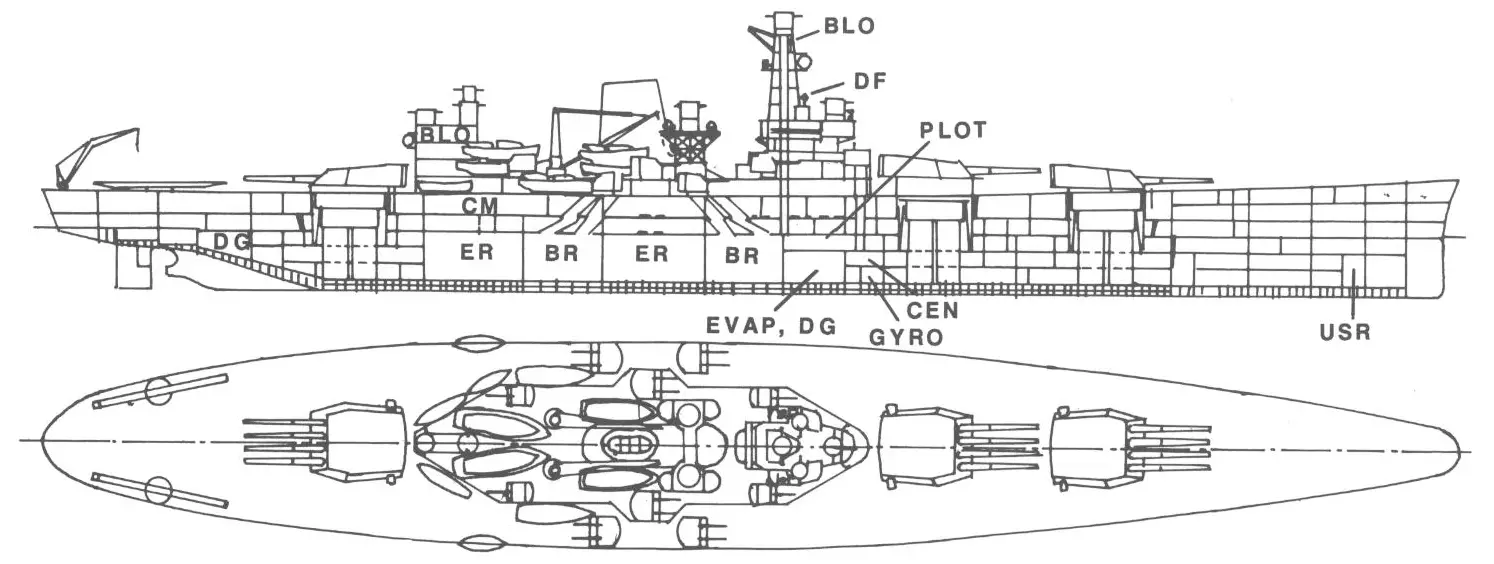
This is more or less how the North Carolina-class was meant to be built but then Japan decided that they wouldn’t follow the treaty limits. This lead to an escalator clause, allowing for the usage of 406 mm guns. The North Carolina-class design would then be quickly modified with a final armament of 3 triple turrets with 406 mm guns for the main battery.
In World of Warships, Florida represents the design XVI-C if the North Carolina-class would have ever been built this way.
She also presents the same battlecruiser characteristics as Champagne and Slava with an improved dispersion but lighter armor than other battleships at her tier.
Health Pool and Armor
- Hit points – 63,800.
- Plating – 25 mm.
Main Armament
- Main battery – 3×4 356 mm.
- Firing range – 18.6 km.
- Maximum HE shell damage – 5,000.
- Chance to cause fire – 30%.
- HE initial velocity – 861 m/s.
- Maximum AP shell damage – 10,500.
- AP initial velocity – 823 m/s.
- Reload time – 30.0 s.
- 180 degree turn time – 45.0 s.
- Maximum dispersion – 204 m.
- Sigma – 1.70.
Secondary Armament
- 4×1 127.0 mm, range – 5.0 km.
- Maximum HE shell damage – 1,800.
- Chance to cause fire – 5%.
- HE initial velocity – 792 m/s
- 6×2 127.0 mm, range – 5.0 km.
- Maximum HE shell damage – 1,800.
- Chance to cause fire – 5%.
- HE initial velocity – 792 m/s
Anti-air Armament
- AA defense: 37×1 20.0 mm, 6×2 127.0 mm, 8×4 40.0 mm, 3×2 40.0 mm, 4×1 127.0 mm.
- AA defense short-range: continuous damage per second – 319, hit probability – 70 %, action zone 0.1-2.0 km;
- AA defense mid-range: continuous damage per second – 270, hit probability – 75 %, action zone 0.1-3.5 km;
- AA defense long-range: continuous damage per second – 158, hit probability – 75 %, action zone 0.1-5.8 km;
- Number of explosions in a salvo – 5, damage within an explosion – 1,400; action zone 3.5-5.8 km.
Maneuverability and Concealment
- Maximum speed – 27.0 kt.
- Turning circle radius – 760 m.
- Rudder shift time – 15.4 s.
- Surface detectability – 13.9 km.
- Air detectability – 10.1 km.
- Detectability after firing main guns in smoke – 12.0 km.
Available consumables
- Slot 1 – Damage Control Party
- Slot 2 – Repair Party (Duration time 28 s; HP per second 319; Reload time 80 s; Charges 3)
- Slot 3 – Defensive AA fire
- Slot 4 – Fighter/Spotting Aircraft
All stats are listed without crew and upgrade modifiers but with the best available modules.
Early opinion
Right now, without knowing the exact armor protection on these ships, I’m frankly not hyped at all.
Firstly, while the firepower is, in terms of alpha damage, way above anything that you will find at each tier, the 40s reload and the 1.7 sigma basically negates completely this advantage. Of course, the dispersion won’t be worthless. Massachusetts for example has 1.7 sigma with the same dispersion and is still able to hit things reliably. I personally really expect a reload buff though.
My main issue with these ships is, however, survivability. They are meant to have a combination of low speed and, according to the devblog, thin armor. I seriously hope that it doesn’t mean something similar to the Amagi because with this, combined with the low speed, they would just be damage pinatas. It’s especially worrying for the Vermont that seems to be an absolute unit of a battleship in terms of size.
However, if their armor scheme is anything like the Colorado, it would mean that they would be very hard or even impossible to citadel just like the British battleships of the early days.
The second problem would be the playstyle. With the low speed, long reload and thin armor, they will certainly end up having a very static playstyle with central positioning to avoid dying in 30 seconds the moment a flank collapses since they wouldn’t be able to run away fast enough otherwise.
For Florida herself, she could be a fun ship to play if she is like the Champagne, a large heavy cruiser. She won’t have the same mobility of course but we will see how it goes.
For now, it’s everything that we know about this new line split. Don’t worry for the review on the California, it is coming, I just didn’t have the time to finish it yet (advise: Do not buy this ship unless you love her history).





40s reload, 1.70 sigma and 280m of dispersion
good luck
i’m going to be honest: I WANTED an American BB split and a South Dakota 1920-edition in said split. And to be honest, the two that we got really look the part, especially the tier IX, from what I can tell.
But what I ALSO wanted, was a split that started at lower tiers, with Nevadas, Pennsylvanias and why not, maybe even a Lexington cl*** battlecruiser.
I most definitely did NOT want a Tillman. And while I wanted a SoDak 1920, I would also have liked an engine refit (they did it for the Bayern, and the Normandie, but the US BBs all have to have their historical top speeds? WHY, exactly?
What I waited for: Nevada in both form (post-WWI and WWII)
What I will get: WTF paper-monsters